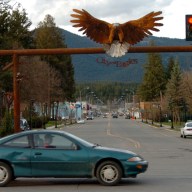The search for missing Aboriginal women in Alberta is an ongoing and constant effort, staffed by law enforcement and loved ones desperately seeking their missing sisters, mothers and daughters.
“It’s more than a racial issue, but in Canada, it becomes a racial issue,” said Kathy King, mother of slain Aboriginal sex trade worker Cara King, whose body was found in a canola field in Sherwood Park in 1997. “It’s unfortunate the large percentage of missing are Aboriginal, but that speaks historically to the larger issue of vulnerability.”
Alberta RCMP Cpl. Wayne Oakes said that while Project Kare, a unit devoted to investigating disappearances of high-risk people, doesn’t catalogue the missing by race, “a disproportionately high ratio is that of First Nations women.”
He added police have received past criticism about perceived minimal efforts to find Aboriginal women in the province.
“It was suggested police don’t put the same degree of emphasis on those cases. We definitely do,” Oakes said. He added in summer 2004, the disappearance and murder of 19-year-old Aboriginal sex trade worker Rachel Quinney was investigated at its height by 50 police officers.
Regardless, King said, she feels strongly that greater effort is required to prevent First Nations women from falling victim to abuse, kidnapping and human trafficking.
Through working with Sisters in Spirit — a national group dedicated to reducing violence against Aboriginal women — King says she has learned more than 500 have gone missing over the past two decades.
The reality, she says, is unseen by most Canadians. She feels if the people continue to turn a blind eye, Aboriginal women will keep disappearing.
“Like my daughter, these women are caught up in a terrible world of drug use and exploitation … We need to ensure that the lives of Aboriginal women are not treated as disposable.”
















